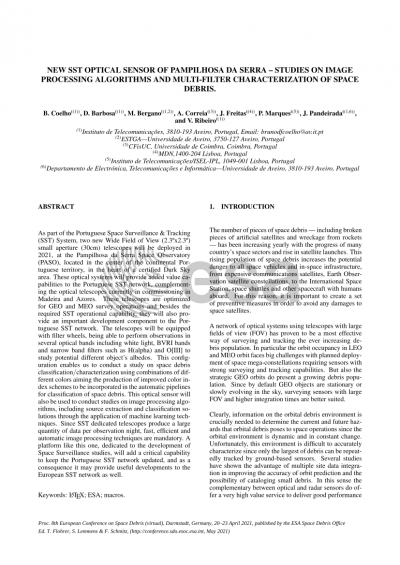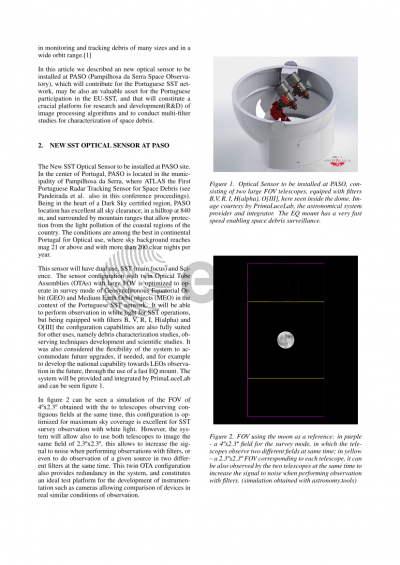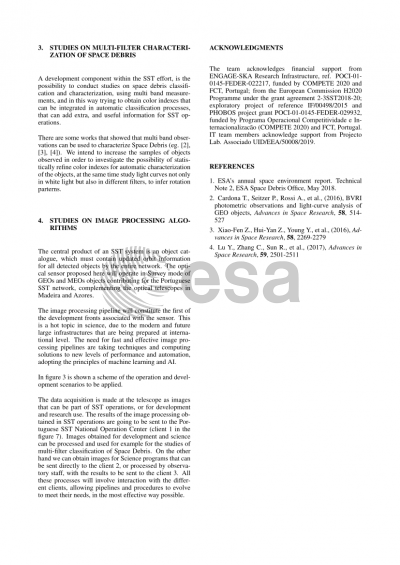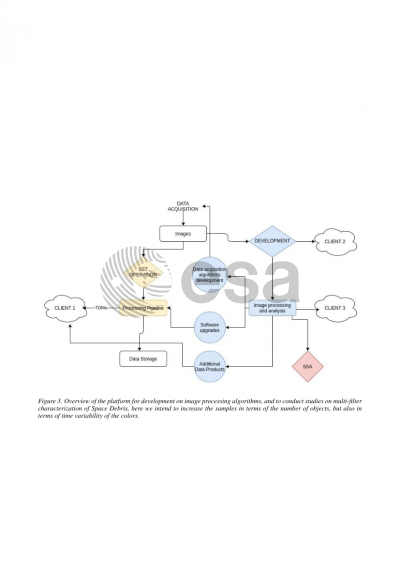Document details

Abstract
As part of the Portuguese Space Surveillance & Tracking (SST) network System, two new Wide Field of View (2.3ºx2.3º) small aperture (30cm) telescopes will be deployed in 2021, at the Pampilhosa da Serra Space Observatory, located in the center of the continental Portuguese territory, in the heart of a certified Dark Sky area. These optical systems will provide added value capabilities to the Portuguese SST network, complementing the optical survey and tracking telescopes currently in commissioning in Madeira and Azores. These telescopes are primarily optimized for GEO and MEO survey operations and besides the required SST operational capability, they will also play an important role for research and provide an important development component to of the Portuguese SST network and take part in a wider observation effort in Europe.
Having these telescopes equipped with filter wheels enables to perform observations in several optical bands including white light, BVRI bands and narrow band filters such as H(alpha) and O[III] enabling to study potential different object’s albedos.
This configuration allows to characterize space objects, either debris and operational satellites, using combinations of different colors aiming the production of improved color index schemes to be incorporated in the automatic pipelines for classification. The optical sensor configuration also allows to study existing image processing algorithms and further develop them by including source extraction and classification solutions through the application of machine learning techniques. Since SST dedicated telescopes produce a large quantity of data per observation night, fast, efficient and automatic image processing techniques are mandatory to .
A platform like this one, dedicated to research, development and operations of Space Surveillance and Tracking, will allow a much accurate space object cataloging and will be an added value to the Portuguese SST network and as a consequence, a valuable asset to the European SST observation network as well.
Preview





